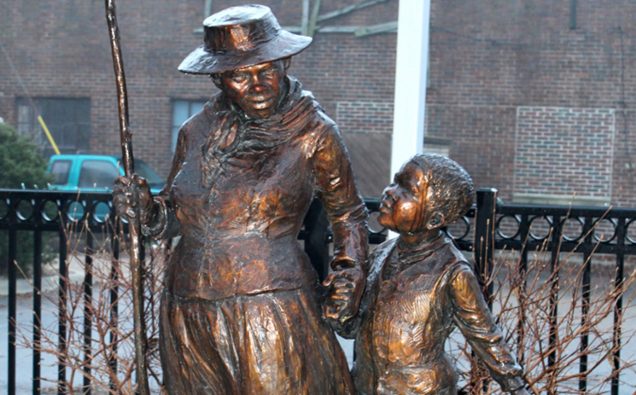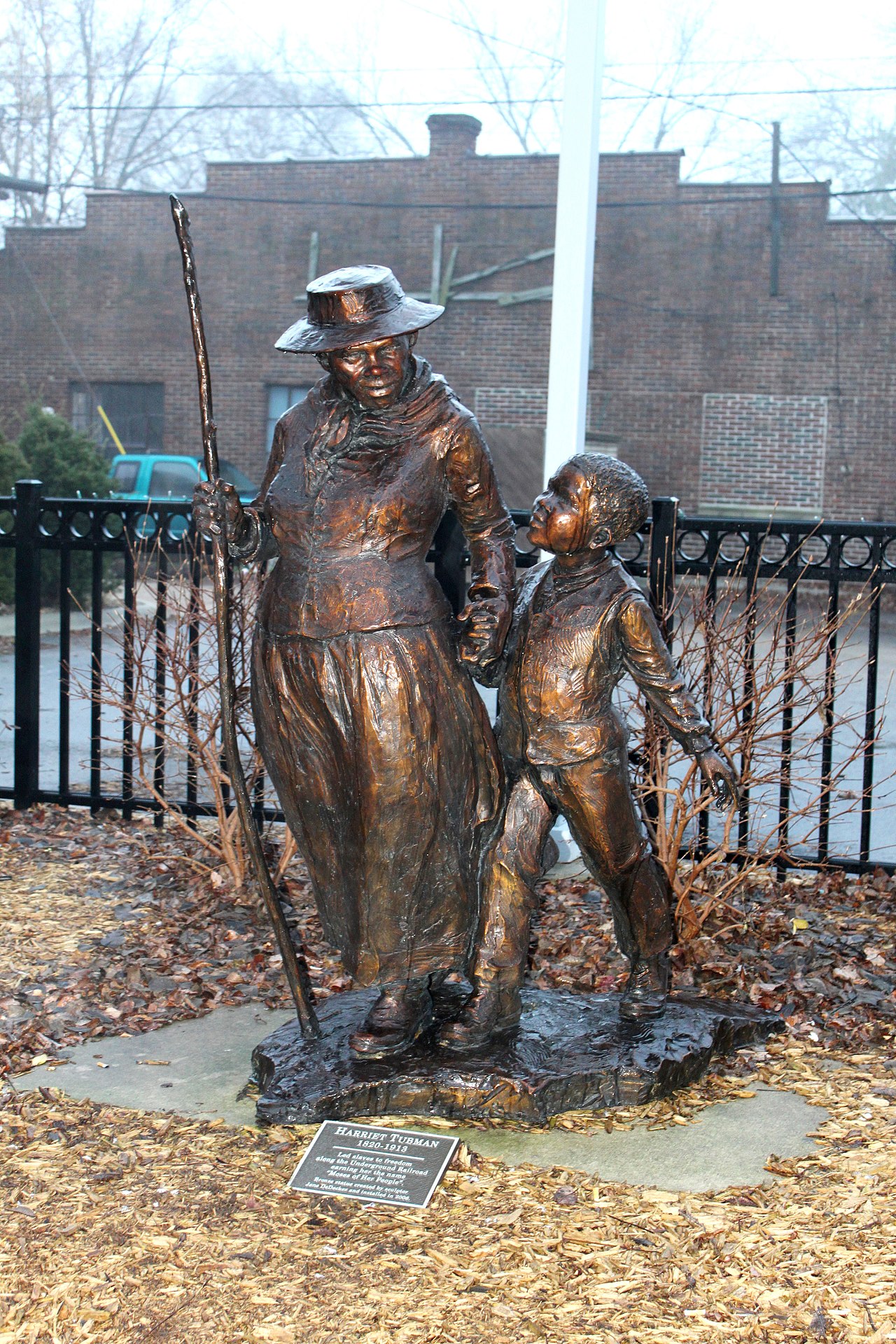
Image shows a sculpture of Harriet Tubman by Jane DeDecker, photograph by Dwight Burdette/Wikimedia
Some were swiftly sanguine that the Obama presidency may mark a post-racial era. 2019 punctures that balloon of illusion. Some of the volcanic lava bubbling underneath may have been precipitated by witnessing a Black Man in the White House – a reality not easily digestible.
Cinematic treatment of the slavery era has not been noted for its factual fastidiousness. Yet, attempts have been made in the past few years to attack this painful subject. A recent example is the movie, “Harriet” which tackles the true story of an enslaved black woman who risked life and limb to break the shackles of bondage and escape to freedom. Having done so under arduous circumstances, she didn’t stop, and then served as a “conductor” in what is described as the “Underground Railroad” to facilitate the escape of other fugitive slaves.
Harriet’s armor was her faith in the Almighty which enabled her to push forward and persevere against seemingly insurmountable odds. Simply put, she fought fear with faith. Harriet Tubman (1822-1913) saw the choices presented before her as liberty or death. The movie is instructive in what cannot be achieved if the paralyzing shackles of slavery and submissive mentality are obsequiously accepted. On the other hand, it demonstrates what can be accomplished through defiance and rejection of an inhumane status quo.
India, for example, is a classic case where, despite great technical strides made, its tyrannical caste system is a self-confining jail from which there is no escape. Dark pigmentation is often the subject of scorn and derision in the Subcontinent. Ask the Tamils of South India how they are perceived and treated by the Hindi Belt in North India.
Despite the emancipatory impact of Sufi saints with their inclusive message and austere lifestyle, the Indo-Pak region still sees widening gulfs alongside the fault lines of ethnonational divisions, sectarian hate, and sharpening socioeconomic schisms.
The politically abusive climate currently in vogue in Washington is strongly reminiscent of Punjab politicking. Unfettered prejudice running rampant exacts its own cannibalizing toll. A classic example is that of post-Tito Yugoslavia, which fractured into 7 small countries: Serbia, Croatia, Kosovo, Macedonia, Slovenia, Montenegro, Bosnia-Herzegovina. A similar scheme under the hijab of “administrative units” is being peddled in Pakistan without adequate comprehension of its larger breakaway implications.

A sculpture by Jane DeDecker, photograph by Dwight Burdette/wikimedia
In the American South, which was the bedrock of a slave-holding culture that catalyzed the Civil War, some archaic attitudes remain uncorrected and fossilized. The distinct voting pattern there – often at variance with broader national trends – reveals that the needle toward enlightenment at the grassroots has not moved much despite visibly impressive gains at the top.
Ad nauseam, there are finger-pointing pontificating lectures directed at others while perennial blind spots persist to misdoings occurring under one’s own watch in one’s own backyard.
The story of the heroic life of Harriet Tubman, a 5-foot tall woman, who to date casts a giant shadow, endures. At Karachi airport, during the early 1990’s, I had my own inspirational encounter with a tiny lady with giant impact: Mother Teresa of Albania.
Striving for human dignity and resisting humiliation is not a gift-wrapped gourmet dish which comes fully prepared and served on a platter. The Obama Administration proposal to redesign the 20-dollar bill to feature Harriet Tubman in 2020 effectively has been quashed.
The struggle to attain the heights never ceases.

















